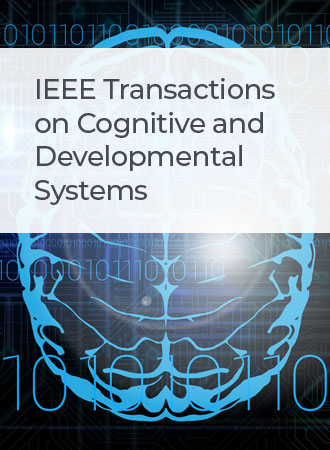GENet:从脑电图检测各种神经系统疾病的通用神经网络
IF 4.9
3区 计算机科学
Q1 COMPUTER SCIENCE, ARTIFICIAL INTELLIGENCE
IEEE Transactions on Cognitive and Developmental Systems
Pub Date : 2024-04-08
DOI:10.1109/TCDS.2024.3386364
引用次数: 0
摘要
神经系统疾病(NDs)给全球健康造成了巨大负担,被认为是导致全球死亡和残疾的主要原因。现有的大多数 NDs 检测方法都是针对特定疾病的,这限制了算法的跨疾病适用性。与多种诊断系统相比,单一诊断平台可节省时间和金钱。目前还没有利用脑电图(EEG)信号数据诊断不同类型 NDs 的统一标准平台。为解决这一问题,本研究旨在开发一个基于卷积神经网络的通用脑电图神经网络(GENet)框架,该框架可从脑电图中识别各种 ND。建议的框架由几个部分组成:1) 使用通道缩减、重采样和分割为 GENet 模型准备数据;2) 设计和训练 GENet 模型,为分类任务提供重要特征;3) 使用不同的信号段长度和多种训练批量评估所提出模型的性能,并使用六种不同 ND(即精神分裂症、自闭症谱系障碍、癫痫、帕金森病、轻度认知障碍和注意力缺陷/多动障碍)的七个不同脑电图数据集进行交叉验证。此外,本研究还探讨了所提出的 GENet 模型能否从脑电图中识别出多种 ND。与最先进的方法相比,所提出的模型在二分类和多分类方面都取得了更好的性能。此外,还利用多项消融研究和分层特征可视化验证了所提出的模型,这为所提出的模型提供了一致性和效率。所提出的 GENet 模型将帮助技术人员创建标准软件,以便从脑电图中检测出任何一种 ND。本文章由计算机程序翻译,如有差异,请以英文原文为准。
GENet: A Generic Neural Network for Detecting Various Neurological Disorders From EEG
The global health burden of neurological disorders (NDs) is vast, and they are recognized as major causes of mortality and disability worldwide. Most existing NDs detection methods are disease-specific, which limits an algorithm's cross-disease applicability. A single diagnostic platform can save time and money over multiple diagnostic systems. There is currently no unified standard platform for diagnosing different types of NDs utilizing electroencephalogram (EEG) signal data. To address this issue, this study aims to develop a generic EEG neural Network (GENet) framework based on a convolutional neural network that can identify various NDs from EEG. The proposed framework consists of several parts: 1) preparing data using channel reduction, resampling, and segmentation for the GENet model; 2) designing and training the GENet model to carry out important features for the classification task; and 3) assessing the proposed model's performance using different signal segment lengths and several training batch sizes and also cross-validating using seven different EEG datasets of six distinct NDs namely schizophrenia, autism spectrum disorder, epilepsy, Parkinson's disease, mild cognitive impairment, and attention-deficit/hyperactivity disorder. In addition, this study also investigates whether the proposed GENet model can identify multiple NDs from EEG. The proposed model achieved much better performance for both binary and multiclass classification compared to state-of-the-art methods. In addition, the proposed model is validated using several ablation studies and layerwise feature visualization, which provide consistency and efficiency to the proposed model. The proposed GENet model will help technologists create standard software for detecting any of these NDs from EEG.
求助全文
通过发布文献求助,成功后即可免费获取论文全文。
去求助
来源期刊

IEEE Transactions on Cognitive and Developmental Systems
Computer Science-Software
CiteScore
7.20
自引率
10.00%
发文量
170
期刊介绍:
The IEEE Transactions on Cognitive and Developmental Systems (TCDS) focuses on advances in the study of development and cognition in natural (humans, animals) and artificial (robots, agents) systems. It welcomes contributions from multiple related disciplines including cognitive systems, cognitive robotics, developmental and epigenetic robotics, autonomous and evolutionary robotics, social structures, multi-agent and artificial life systems, computational neuroscience, and developmental psychology. Articles on theoretical, computational, application-oriented, and experimental studies as well as reviews in these areas are considered.
 求助内容:
求助内容: 应助结果提醒方式:
应助结果提醒方式:


